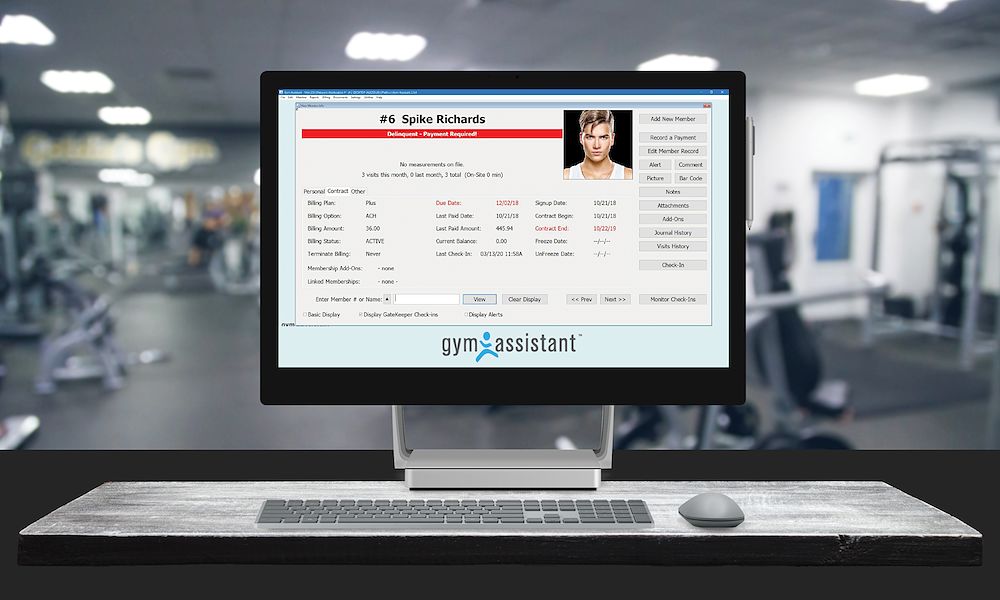How to open a Gym in Arizona
Opening a gym can be a rewarding and profitable venture, especially in a health-conscious state like Arizona. With its sunny weather, beautiful landscapes, and a population that values fitness, Arizona is an ideal location for a new gym. However, starting a gym involves more than just finding a space and setting up equipment. It requires careful planning, a solid business strategy, and effective management tools. One of the most crucial components of running a successful gym is having good gym software. This article will guide you through the steps of opening a gym in Arizona and highlight the importance of gym software.
Step 1: Conduct Market Research
Before diving into the logistics of opening a gym, it’s essential to conduct thorough market research. Understanding your target market, identifying competitors, and recognizing industry trends will help you make informed decisions. Here are some key points to consider:
- Demographics: Identify the demographics of your target market. Are you catering to young professionals, families, or seniors? This will influence the type of gym and services you offer.
- Location: Analyze the area where you plan to open your gym. Is there a high demand for fitness centers? Are there any existing gyms in the vicinity? Consider areas with limited competition but high demand.
- Trends: Stay updated with fitness trends. Arizona residents might be interested in outdoor fitness programs, wellness services, or specialized classes like yoga or CrossFit.
Step 2: Create a Business Plan
A well-structured business plan is the foundation of any successful business. It will serve as a roadmap for your gym and help you secure financing. Your business plan should include:
- Executive Summary: Provide an overview of your gym, including your mission statement, vision, and objectives.
- Market Analysis: Summarize your market research findings, including your target market, competitors, and industry trends.
- Marketing and Sales Strategy: Outline your marketing and sales plan. How will you attract and retain members? What promotional activities will you engage in?
- Services and Pricing: Detail the services you will offer (e.g., personal training, group classes, wellness programs) and your pricing structure.
- Financial Projections: Include projected income statements, cash flow statements, and balance sheets for the first three to five years.
- Management and Staffing: Describe your management team and staffing requirements. What roles will you need to fill, and what qualifications should your staff have?
Step 3: Secure Financing
Opening a gym requires significant capital investment. You’ll need funds for leasing or purchasing a property, buying equipment, hiring staff, and marketing. Explore various financing options such as:
- Personal Savings: If you have sufficient savings, this can be a good option to avoid debt.
- Bank Loans: Approach banks for business loans. Be prepared with a solid business plan and financial projections.
- Investors: Seek out investors who are interested in the fitness industry. They might be willing to provide capital in exchange for equity.
- Small Business Grants: Research if there are any grants available for small businesses in Arizona.
Step 4: Choose a Location
The location of your gym is critical to its success. Consider the following factors:
- Accessibility: Ensure your gym is easily accessible by public transportation and has ample parking space.
- Visibility: A location with high visibility can attract more walk-in traffic.
- Size: The space should be large enough to accommodate all the necessary equipment and facilities, such as locker rooms and showers.
- Cost: Factor in the cost of leasing or buying the property, and ensure it fits within your budget.
Step 5: Obtain Necessary Permits and Licenses
Operating a gym requires specific permits and licenses. These may include:
- Business License: Obtain a general business license from the Arizona Department of Revenue.
- Health Permit: Ensure your facility meets health and safety standards. Contact the Arizona Department of Health Services for more information.
- Zoning Permits: Verify that your chosen location complies with local zoning laws.
- Insurance: Acquire the necessary insurance policies, such as general liability, property insurance, and workers’ compensation.
Step 6: Purchase Equipment
Investing in high-quality gym equipment is essential for attracting and retaining members. Depending on your gym’s focus, you may need:
- Cardio Equipment: Treadmills, stationary bikes, ellipticals, and rowing machines.
- Strength Training Equipment: Free weights, weight machines, resistance bands, and kettlebells.
- Specialty Equipment: Depending on your niche, you might need yoga mats, Pilates reformers, or CrossFit rigs.
- Additional Amenities: Consider providing amenities like lockers, showers, water fountains, and towel service.
Step 7: Hire Qualified Staff
Your staff will play a significant role in the success of your gym. Look for qualified and experienced professionals, including:
- Personal Trainers: Certified trainers who can provide personalized workout plans and support.
- Group Fitness Instructors: Instructors certified in various fitness classes, such as yoga, spinning, or aerobics.
- Administrative Staff: Front desk personnel, membership coordinators, and cleaning staff.
- Management Team: A competent management team to oversee daily operations, marketing, and member relations.
Step 8: Implement Good Gym Software
Good gym software is crucial for managing your gym efficiently. It helps streamline operations, enhance member experience, and improve overall productivity. Here’s why investing in good gym software is essential:
- Membership Management: Track member information, attendance, and payment history. Automated billing and reminders can reduce administrative workload.
- Scheduling and Booking: Allow members to book classes, personal training sessions, or facilities online. This improves convenience and reduces scheduling conflicts.
- Performance Tracking: Offer tools for members to track their progress, set goals, and monitor performance. This can increase member engagement and retention.
- Marketing and Communication: Use the software to manage marketing campaigns, send newsletters, and communicate with members. Personalized communication can boost member loyalty.
- Reporting and Analytics: Access detailed reports on various aspects of your gym’s performance, such as membership growth, class attendance, and revenue. Data-driven decisions can lead to better business outcomes.
- Integration with Other Tools: Ensure the software can integrate with other tools you use, such as accounting software or CRM systems.
Step 9: Market Your Gym
Effective marketing is essential to attract new members and retain existing ones. Consider the following marketing strategies:
- Social Media Marketing: Use platforms like Facebook, Instagram, and Twitter to promote your gym, share success stories, and engage with your community.
- Local Advertising: Advertise in local newspapers, radio stations, and community bulletin boards. Consider offering special promotions or discounts to attract new members.
- Partnerships: Partner with local businesses, schools, or community organizations to cross-promote services.
- Referral Programs: Encourage existing members to refer friends and family by offering incentives like free memberships or discounts.
- Events and Workshops: Host fitness events, workshops, or open houses to attract potential members and showcase your facilities.
Step 10: Provide Excellent Customer Service
Finally, providing excellent customer service is crucial for member retention and satisfaction. Focus on the following:
- Member Engagement: Regularly check in with members, offer personalized support, and celebrate their achievements.
- Cleanliness and Maintenance: Keep your facility clean, well-maintained, and safe. Regularly inspect equipment and address any issues promptly.
- Feedback and Improvement: Encourage members to provide feedback and use it to improve your services. Show members that their opinions matter.
Opening a gym in Arizona can be a fulfilling and profitable venture if approached with careful planning and strategic execution. Conduct thorough market research, create a comprehensive business plan, secure financing, and choose the right location. Invest in high-quality equipment, hire qualified staff, and implement good gym software to streamline operations and enhance member experience. With effective marketing and excellent customer service, your gym can thrive in the competitive fitness industry of Arizona.
At Gym Assistant we specialise in membership management software that is really easy to use – visit https://www.gymassistant.com/ for more!





